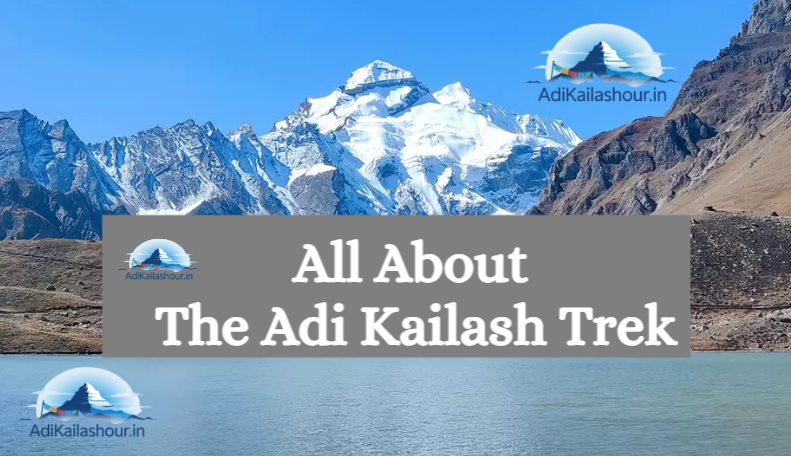The Adi Kailash Yatra is an ancient pilgrimage to one of the most sacred peaks in the Kumaon Himalayas of Uttarakhand. While advancements in road infrastructure have made much of the journey motorable, a significant and spiritually enriching “trek” remains a crucial part of experiencing Adi Kailash up close. This article focuses on the trekking aspect, its challenges, and what to expect.
Is it a “Trek” or a “Yatra”? Clarifying the Journey
Historically, the Adi Kailash journey involved extensive trekking over challenging terrain, taking weeks to complete. However, with the development of roads, particularly the Border Roads Organisation (BRO) improving connectivity, much of the path is now accessible by 4×4 vehicles.
The term “Adi Kailash Yatra” usually refers to the entire pilgrimage, which primarily involves:
- Long-distance road travel from gateway cities (like Kathgodam, Pithoragarh) to Dharchula.
- Specialized 4×4 vehicle travel from Dharchula into the Inner Line region, reaching base camps like Gunji or Nabi, and further up to motorable points like Jolingkong (for Adi Kailash) and Nabhidhang (for Om Parvat).
The “Adi Kailash Trek” specifically refers to the final walking portion to reach the most sacred spots and viewpoints once the motorable road ends.
The Actual Trekking Component
The primary trekking part of the Adi Kailash Yatra takes place from Jolingkong to Parvati Sarovar (Gauri Kund) and the Adi Kailash viewpoint.
- Starting Point for Trek: Jolingkong (around 4,572 meters / 15,000 feet) is the motorable roadhead.
- Trek Distance: From Jolingkong, the trek to Parvati Sarovar and the Adi Kailash view is relatively short, typically 1 to 3 kilometers (one way).
- Trek Duration: This short trek usually takes 1-2 hours to complete, depending on an individual’s pace and the conditions.
- Terrain: The path, though short, involves walking on uneven terrain, sometimes rocky, and at high altitude. It’s generally considered of easy to moderate difficulty for those who are physically fit.
- Altitude Gain: While the trek itself has minimal elevation gain, you will be operating at very high altitudes (above 4,500 meters / 14,000 feet), where oxygen levels are significantly lower.
What to Expect During the Trek
The trek, though short, is deeply rewarding:
- Parvati Sarovar (Gauri Kund): This pristine, clear lake is believed to be Goddess Parvati’s bathing place. Its tranquil waters often beautifully reflect the majestic Adi Kailash peak, creating a breathtaking spiritual spectacle. Pilgrims often perform rituals or take a holy dip here.
- Adi Kailash Viewpoint: From the vicinity of Parvati Sarovar, you get the clearest and most sacred views of the Adi Kailash peak itself. There’s usually a small Shiva-Parvati temple nearby where devotees offer prayers.
- Serene Atmosphere: The high-altitude environment is incredibly peaceful, offering a profound sense of solitude and connection with nature and the divine.
- Flora and Fauna: While the primary focus is spiritual, the trek offers glimpses of unique high-altitude flora and perhaps some Himalayan wildlife.
Preparation for the Adi Kailash Trek
Despite the motorable roads covering most of the distance, the high altitude makes adequate preparation crucial for a comfortable and safe trek.
- Physical Fitness:
- Cardiovascular Training: Start at least 4-6 weeks before your trip. Include daily brisk walking, jogging, cycling, or swimming to build stamina and improve lung capacity. Aim to walk 5 km in under 40 minutes.
- Strength Training: Focus on leg and core exercises (squats, lunges, planks) to build strength for walking on uneven terrain.
- Hiking Practice: If possible, do some practice hikes with a light backpack on inclines to simulate trek conditions.
- Acclimatization:
- Gradual Ascent: Ensure your itinerary allows for gradual altitude gain. Most organized tours include rest days at places like Dharchula or Gunji for acclimatization.
- Hydration: Drink plenty of water (3-4 liters daily). Avoid alcohol, caffeine, and smoking, as these can exacerbate dehydration and altitude sickness.
- Listen to Your Body: Be aware of symptoms of Acute Mountain Sickness (AMS) like headache, nausea, dizziness, or unusual fatigue. Inform your guide immediately if you experience any symptoms. Descend if symptoms worsen.
- Essential Gear for Trekking:
- Footwear: Sturdy, waterproof trekking boots with good ankle support are a must. Carry extra pairs of moisture-wicking socks.
- Layered Clothing: The weather in the Himalayas is unpredictable. Pack moisture-wicking base layers, insulating mid-layers (fleece/down jacket), and a waterproof/windproof outer shell.
- Accessories: Warm gloves, woolen cap/beanie, neck warmer, good quality sunglasses (UV protection), sunscreen, and lip balm.
- Backpack: A comfortable daypack for the trek to carry water, snacks, extra layers, and essentials.
- Trekking Poles: Highly recommended for stability, especially on uneven or slippery paths.
- Personal First-Aid Kit: Include pain relievers, antiseptic wipes, bandages, blister pads, and any personal medications. Consult your doctor about altitude sickness medication (e.g., Diamox).
- Hydration System: Water bottles or a hydration bladder.
- Snacks: High-energy snacks like dry fruits, nuts, and energy bars.
- Permits and Guides:
- An Inner Line Permit (ILP) is mandatory for Indian citizens, obtained from Dharchula. Foreign nationals require special permits.
- It is highly recommended to undertake the trek with a certified guide or tour operator who is familiar with the terrain, weather conditions, and emergency protocols.
Conclusion
The Adi Kailash trek, though short in distance, is the culmination of a deeply spiritual journey. It offers an unparalleled opportunity to connect with the raw beauty of the Himalayas and the profound spiritual energy of this ancient abode of Lord Shiva and Goddess Parvati. With proper preparation and respect for the environment, this trek promises to be a transformative and unforgettable experience.

